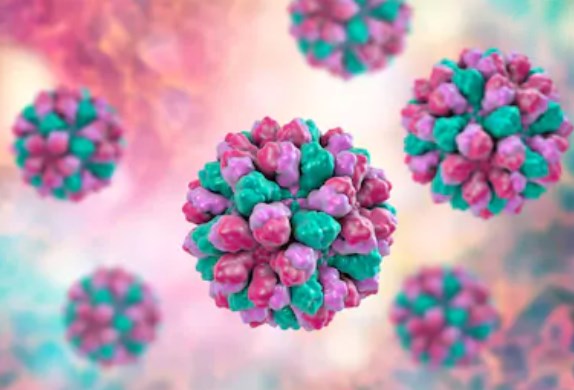 In 1968, scientists isolated a viral pathogen from the feces of a patient with acute diarrhea that broke out in Norwalk City, USA, and named it Norwalk virus, also known as Norovirus. It is a group of virus particles with similar morphology and slightly different antigenicity. Norovirus infection affects the stomach and intestines and causes gastroenteritis. The main symptoms of the disease are diarrhea and vomiting. Norovirus is divided into 5 genomes (GⅠ-GⅤ), of which only GⅠ, GⅡ and GⅣ can infect humans, while GⅢ and GⅤ can infect cows and rats respectively. Norovirus infections are prevalent all over the world, and mainly affects adults and school-age children, with high incidence during the cold season. Norovirus is responsible for 60%-90% of all nonbacterial diarrhea outbreaks in the United States each year.
In 1968, scientists isolated a viral pathogen from the feces of a patient with acute diarrhea that broke out in Norwalk City, USA, and named it Norwalk virus, also known as Norovirus. It is a group of virus particles with similar morphology and slightly different antigenicity. Norovirus infection affects the stomach and intestines and causes gastroenteritis. The main symptoms of the disease are diarrhea and vomiting. Norovirus is divided into 5 genomes (GⅠ-GⅤ), of which only GⅠ, GⅡ and GⅣ can infect humans, while GⅢ and GⅤ can infect cows and rats respectively. Norovirus infections are prevalent all over the world, and mainly affects adults and school-age children, with high incidence during the cold season. Norovirus is responsible for 60%-90% of all nonbacterial diarrhea outbreaks in the United States each year.
The diagnosis methods of norovirus infection are as follows:
Creative Biogene's test kits use real-time fluorescent PCR technology, take the highly conserved regions of norovirus GⅠ and GⅡ genomes as the target regions, designs specific primers and fluorescent probes. Then the target sequence is amplified by PCR, and the accumulation of amplified products is monitored by fluorescence probe technology to realize the qualitative detection of the nucleic acid of norovirus in the samples. Our products have high specificity and the test results are accurate and reliable.
Creative Biogene has accumulated years of experience in norovirus infection diagnosis. We promise to provide you with the best diagnostic products. You can choose us with confidence.
Please contact us for more details.
Reference
| Cat# | Product Name | Product Type | Inquiry |
|---|---|---|---|
| C0755T | Norovirus test Kit | Test kit | Inquiry |
| C0756T | Norovirus nucleic acid test kit | Test kit | Inquiry |
Copyright © 2025 Creative Biogene. All rights reserved.